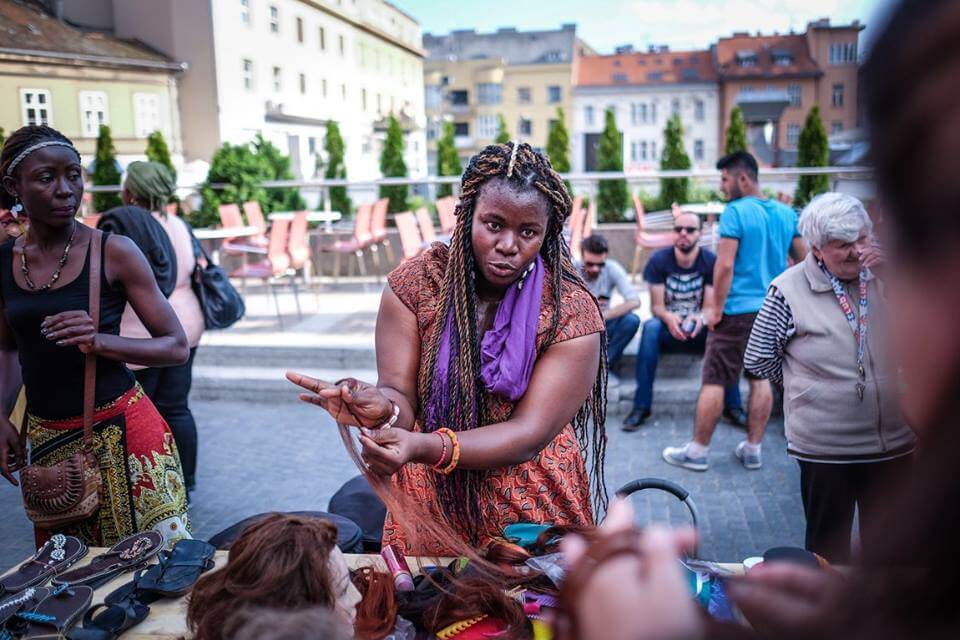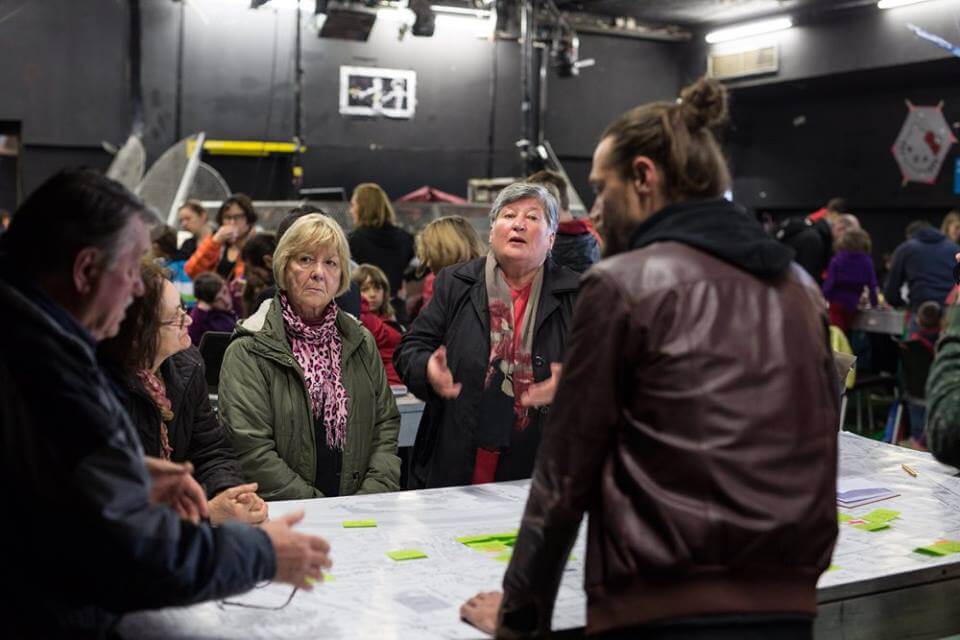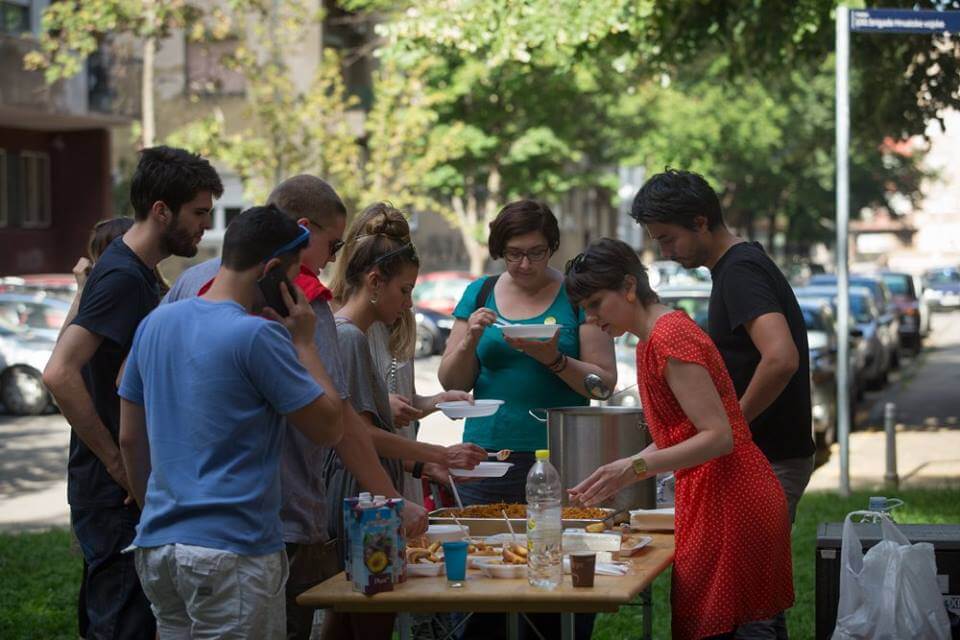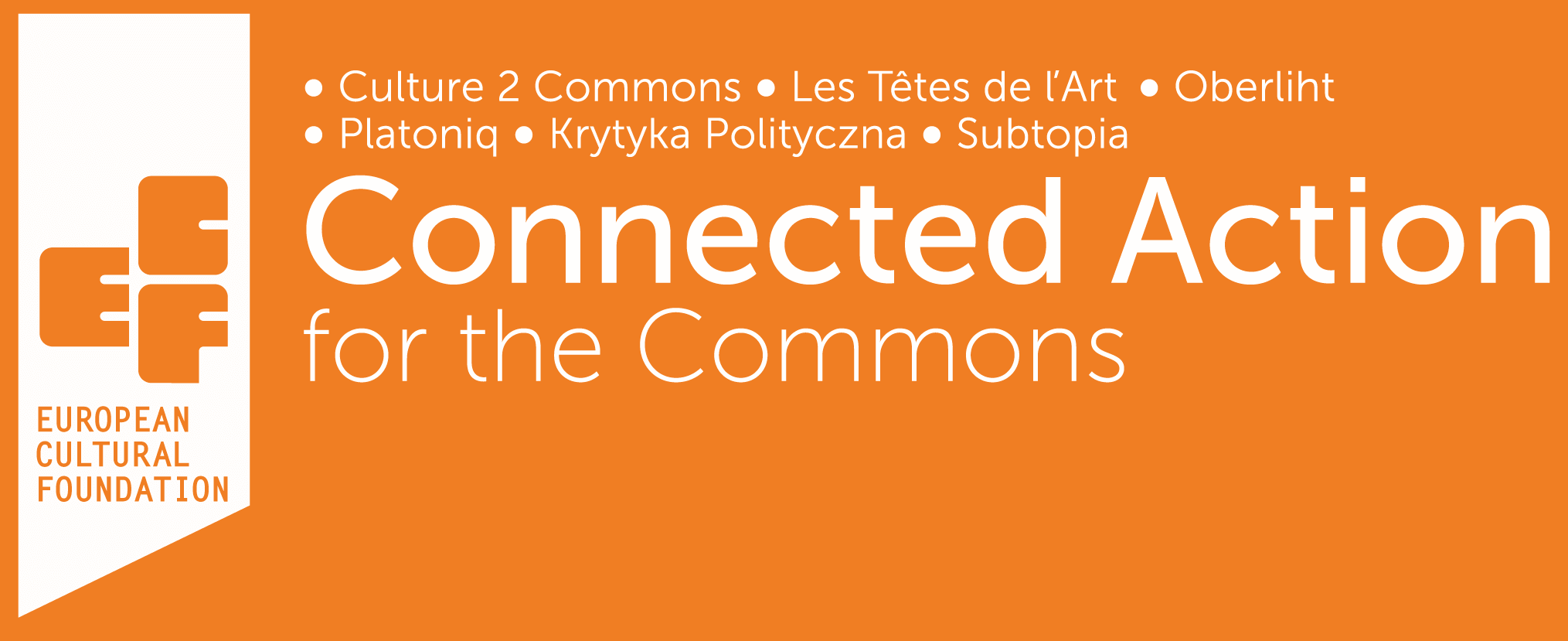An interview with Janja Sesar and Antun Sevšek from Alliance Operation City and Platform Upgrade, following up an earlier article on the current state of socio-cultural centers in Croatia. So, to start with: What is Zagreb: Otvoreni grad? campaign and what does it advocate for?
“Zagreb: otvoreni grad?” (“Zagreb: an open city?”) is a campaign advocating for a new socio-cultural center in Zagreb. The future socio cultural centre we envision will create synergy between various fields which reflect the current needs of the community. The fields we detected as crucial at the moment are intercultural dialogue and integration, sustainable development and solidary economy, social entrepreneurship and last but not least culture, art and youth. European cities, including Zagreb, are rapidly changing. Migrations, poverty, unemployment and pollution are forcing societies to face these challenges and try to give an adequate answer to them. “Zagreb: open city?” poses the question of possibility for “old” citizens of Zagreb as well as “newcomers” to shape their lives together in communities based on tolerance and understanding. It is exploring the chances for city development based on engagement, dialogue and solidarity among people living in Zagreb as well as bringnig together different pieces of the puzzle which build our lives in the city. What are our possibilities to adopt new models of social development – how do we share knowledge, how do we build networks of solidarity, how do we grow vegetables in the urban context, how do we consider all these questions as a organic system? These are the questions the new socio-cultural center will address.
Can you tell us more about the idea behind the socio-cultural community center? What kind of opportunities for cooperation does it offer, what actors does it involve, what kind of model of governing does it anticipate?
Behind the campaign is a platform of organisations under the name Upgrade, coordinated by the Alliance Operation City. Apart from the Alliance Operation City (30 NGO’s in the field of culture and arts) our platform at the moment contains the Green network of Activist Groups (ZMAG, Zelena mreža aktivističkih grupa), the social cooperative Taste of Home (Okus doma) and the Center for Peace Studies (Centar za mirovne studije, CMS). Our platform is still in the intensive process of building its capacities, enhancing existing coalitions and gathering new partners from the broad spectrum of civil society, social entrepreneurship and solidary economy.
Let me tell you what led to this campaign. The independent cultural scene in Zagreb has a long and developed history of structural engagement in the development of public policies in the field of culture as well as dealing with commons in the wider sense – public space, highways etc. Since the early 2000’s the independent cultural scene is advocating for improving its’ position within the local and national cultural system which led to the foundation of Alliance Operation City in 2006. One of the major problems of the scene was and still is a lack of space for work and production as well as presentation. Therefore the red thread of the work of the Alliance since 2006 is securing infrastructure for the work of the independent scene in Zagreb as well as developing innovative models of governing cultural and other institutions in the form of civil public partnerships. As a result of a long advocacy efforts Pogon – Center for Independent culture and youth was founded in 2009. Since than it has established itself as an important place for culture, art and youth in Zagreb, partially filling the gap which existed for so long in the city cultural landscape.
Since the city and the needs of communities are constantly changing and there is a chance of development of poly locational and multifunctional spaces in of Zagreb, platform Upgrade began developing a model for the upgrade of civil-private partnerships and a new socio-cultural center with a strong aspect of interculturalism and integration in a very broad sense – creating solidarity and tolerant society.

Which tools are you using to connect cultural and other civil society actors in planning, advocating and publicly representing the idea for an intercultural community center?
The advocacy campaign we are currently managing is an attempt to create visibility for the project while avoiding the usual marketing strategies such as ads, billboards or media placement. The campaign is structured as a series of events that involve the very actors that will participate in the creation and management of the future centre. It is a way of getting to know new initiatives and organisations and test new partnerships, while informing the general public and the city government about the importance of the topics we are covering. For example we created a small community garden, organised a series of various workshops and presentations and produced a public artwork. The most important feature of these activities is participation of different target groups in different parts of Zagreb. For now the media campaign is based almost exclusively on social networks and it has already established a respectable base of users and followers. We hope to carry this momentum further and develop more communications means and activities in the autumn.
Can you explain in short the state (infrastructural, financial, audience-wise) of the existing cultural centers, autonomous spaces and alternative culture and youth clubs in Zagreb?
This question covers an extremely wide array of institutional arrangements to be easily answered. Most existing cultural centres linger on as relics from previous systems, both in terms of their hierarchical management concept and in terms of their programmes. They are predominantly focused on servicing the neighbourhoods in which they are located,but the limitations to their budgets prevent them from contributing substantially to the emerging cultural and societal needs our campaign is addressing. They are still important, mainly because of their local outreach, but are mostly unable to cover some contemporary or alternative programmes.
Alternative clubs that have formed in the last 20 years, on the other hand, while offering content lacking in mainstream cultural centres are still struggling to secure adequate and stable financing for their development or to expand their user base beyond their usual patrons. The need for this growth is one of the key motivations behind our initiative.
In 2003, Platforma 9.81 mapped abandoned urban spaces and analyzed (spatial) needs of the independent cultural scene in Zagreb. Did the situation change in the last decade and if so, how?
The initial research was a pioneering attempt of assessing the viable alternatives to the then crippled system of planning and construction of the city. Many of the categories and criteria of mapping used then are not directly translatable into the current situation but some trends can be detected. A number of sites has since been brought back to use, predominantly through commercial developments, but a lot of them still remain. The condition of most of the remaining sites has deteriorated rapidly and some of them have partially collapsed. The continuing processes of privatisation of former factories has added a series of newly abandoned spaces to the initial list, but the often dubious real-estate transactions behind these projects make them all but accessible to any public or civic discussion about their future.
Upgrade conducted a research of Zagreb’s spatial possibilities. What did it show?
Apart from revisiting the few remaining city or state owned sites which could more or less realistically be expected to be converted into public or cultural uses, our research also dealt with the system of publicly owned abandoned commercial spaces. These basically small and mostly inadequate former offices, shops or apartments offer a completely new way of looking into systematically meeting the spatial needs of the ever expanding independent cultural and civic sector. Since the chances of entering in a constructive dialogue with the city -regarding the opening up of the remaining vacant large industrial sites – are diminishing this new series of smaller spaces could prove a viable alternative. This implies, of course,rethinking the strategy of forming a large multi-faceted eco-system of various uses within a large single building or site into forming a poly-locational modular centre scattered across the city. The future of the process hinges on this strategic choice: a centralised model vs the network.

The reconstruction project of Jedinstvo shows the original idea of a center which exists in multiple locations. What kind of infrastructure did the Alliance have in mind for this?
Multiple locations could be perceived as a way of ensuring the resilience of the system, both in the context of meeting various needs of the actors involved and in avoiding the unavoidable ghettoisation of independent culture in the case of bringing together all the users on a single site. The multiple locations, however, bring with them the problem of devising a stable and open managing system. The plan is to implement anopen and transparent system which still would beadaptable to specific requirements of the individual locations.
Why are the processes of opening up, conversion and renovation of abandoned military buildings or industrial heritage so slow?
There are many reasons, most of them stemming from the size and historical value of the sites which prevent local governments from adopting quick and lucrative strategies of conversion. Another major factor is that the key sites have been inscribed in spatial plans as non-commercial and public categories of use. This prevents easy entry of private capital but also condemns the sites to slow decay since the shrinking city budgets are greatly insufficient to deal with the conversions themselves. Other possible and more inclusive strategies involving multiple stakeholders and various sources of financing are rarely if ever explored because they imply a level of initiative and institutional innovation local governments are not prepared or able to commit to.
When it comes to property management, how often do local governments choose temporary use of space as the solution for the infrastructure?
Temporary use has only recently and rather timidly been introduced as a concept in the planning legislative. There are no precedents and legal or procedural recommendations to enter into this process. International examples offer various models of successful strategies of occupation and use, both in the context of public and private ownership. Most examples, however, didn’t solve the uncertain futures of transforming initial temporary and informal uses into stable and legal permanent arrangements.
Platform Operation City: Upgrade has introduced a new type of networking, so called tactical networking. The platform consists of a coalition of people and organisations. Do you think of particular opportunities for intervention or plan collective actions?
As Operation was always aiming at systematic and structural changes in the cultural system the processes we are talking about are long and need good guidance, a lot of joint effort and planning. It was clear from very early on that the role of culture is goes beyond the narrow boundaries of its’ field and Operacija Grad was very active in fighting for public space as well as the commons, such as highways. In these long processes we are preparing the playing field for particular opportunities and interventions.. Without a solid base under our platform and a long process of developing relationships this wouldn’t be possible.

Alliance Operation City transfers knowledge on a local level, for example with the project ‘Making Space for an Active Community’ in Pula and Karlovac. What can organizations and individuals in those cities gain from Alliances’ experience and practice?
As we already mentioned, the independent scene in Zagreb has a long history of self organising, advocating and working on improving its unfairly neglected position within the cultural system. Networking, maintaining a broad, firm and steady platform of organisations has always been a challenge and sometimes an obstacle (as it needs broad consensus of different actors), but it had a concrete result in Pogon. This innovative model of co-governing an institution by the city and an alliance of civil society organisations can serve as an example to actors active in other Croatian cities. As Alliance Operacija grad always tried to work on a systemic, structural approach -not only on local but also on national level – Pogon should be be a flagship to other similar initiatives and a positive example to policy makers and politicians.
After the experience of 1990’s and the last six months, what does the word culture mean in Croatia today, what is the general overview from a cultural worker’s point of view? What is the independent cultural scene’s position today?
It is difficult to compare it to the 90’s as we were very young than. But what is obvious is that we are unfortunately witnessing an erosion of the cultural system in it’s whole, as it has no real importance in the past governments, which is more than visible in the percentage in the state budget that is allocated to this field. Furthermore there are no cultural strategies systematically empowering plural, open and vivid cultural landscapes which are able to plan, produce and present their work to the public, in the long run.
These tendencies and a very unstable political context, alongside endangered democratic values, are continuously shrinking space to maneuver for independent cultural scenes, thereby neglecting the importance it has in the development of modern Croatian society. What we understand by independent cultural scenes and contemporary art are cultural and artistic practices which foster critical, engaged, interdisciplinary approaches to the society they are addressing, giving voice to the Other and marginalized issues. These practices are characterized by collaborative methods and processes which enhance debate and dialogue in society. But despite of the described negative circumstances, we are convinced the independent cultural scene has an important role in the cultural landscape, and is actively working to make it even more present.

